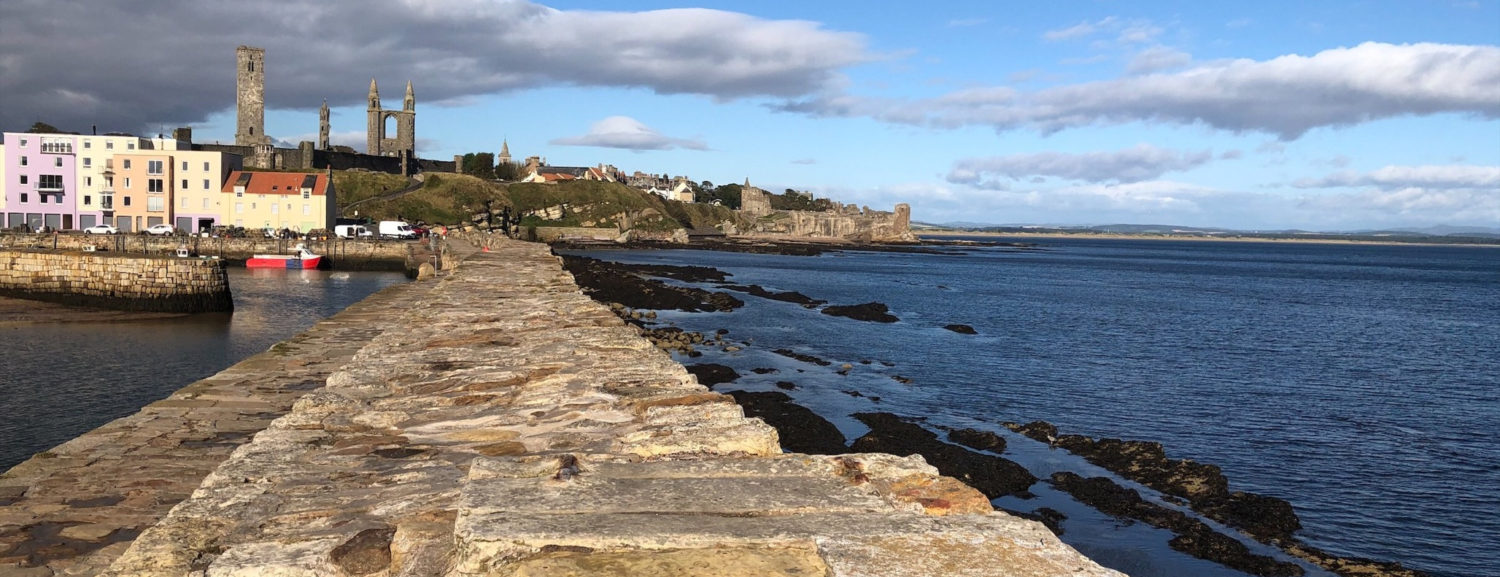The harbour has been in a close relationship with the St Andrews Cathedral Priory since the 14th century, and the Priory Precinct Wall has had a significant influence upon the subsequent development and widening of the quays in the Inner Harbour, due to some traffic issue in a narrow strip connecting the wall to the harbour. In regard to the development history of the harbour, the John Geddy’s Plan of St Andrews of c.1580, clearly illustrates the structures of timber and stone flanking the entrance channel to the harbour and extending inland along the Kinness Burn. By the 16th century, the construction of an extensive pier, bulwark to seaward and linear masonry quays presented the initial separation of the Inner and Outer Harbours, which was, later in the 18th century, reinforced by the introduction of gates between two basins. In the 19th century, along with other improvements, the protective pier and bulwark were extended in the endeavour to make the harbour safer. However, today it remains a tidal harbour, dry at low water unless the gates are used to retain water in the Inner Harbour.
The (North) pier is a classic example of Scottish vernacular harbour work. It comprises a pier rubble construction with a solid bulwark on its seaward face protecting the wide quay from overtopping waves in extreme weather. The course of the pier is somewhat crooked, reflecting the builders’ strategy to construct it from firm point to firm point along the natural rock skerry that forms its foundation. The dry-stone, rubble construction of the pier offers great character, and the surfaces reveal many stories of repairs to the pier, involving various strategies for placing the stones. The outer, seaward end of the pier contains in places re-used stone with moulded margins, presumably from the ruined castle or cathedral in the 18th and 19thcenturies. The pier possesses several notable features along with its length, including cyclopean stone mooring pawls, stone pairs leading to the bulwark, a stone slipway in the harbour where the pier joins the Shorehead quay and a stone-built ramp at the root of the pier leading down onto the shore.
As one of the most iconic sites of St Andrews, student traditions of the University such as the Gaudie and Pier Walk take place at the pier annually. The Gaudie is in memory of John Honey, a student who rescued five seamen of the Janet of Macduff which ran aground off the East Sands of St Andrews on the 3rd of January 1800. During the Pier Walk, students adorned in their red gowns process after Chapel toward the east and walk along the length of the historic pier. See more details regarding these two traditions here.
Today, the Harbour and Pier is managed by St Andrews Harbour Trust.
